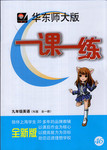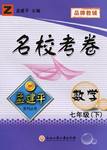The world’s first “Sky Pool” has been uncoated(曝光)-and it’ll give anyone a touch of dizziness(眩晕), unless he or she is not bothered by heights.
Situated in the capital’s new riverside district beside Battersea Power Station, the glass pool, hanging 10 storeys, or 110 feet up as a bridge between two apartment buildings, is 25m long, 5m wide and 3m deep with a water depth of 1.2m. Swimmers will be able to look down 35 meters to the street below as they take a dip, with only 20cm of glass between them and the outside world. It’s even got a bar, folding chairs and an orange garden.
The pool will be part of Embassy Gardens at Nine Elms, a huge£15 billion building project beside the new American Embassy in south-west London. The project is creating thousands of apartments, the smallest of which are expected to cost nearly $1 million, and the pool will only be open to the apartments’ owners.
Embassy Gardens takes design inspiration from the Meatpacking District of New York with floor to ceiling windows and brick frontages. The designer, Sean Mulryan, desired to push the boundaries in the capability of construction and engineering and do something that had never been done before. The Sky Pool’s transparent structure is the result of significant advancements in technologies over the last decade.
The experience of the pool will be truly unique and it will feel like floating through the air in central London.
Those people lucky enough to swim there will have a perfect view of the Palace of Westminster and the London Eye. It will be a selling point for developers when the second stage of the development is released to market.
1.Who can swim in the Sky Pool?
A. Anyone at Nine Elms.
B. Visitors to London.
C. People living in Embassy Gardens.
D. Those who are not terrified of heights.
2.People lucky enough to swim in the Sky Pool can do the following except.
A. drinking with friends.
B. experiencing diving and surfing.
C. appreciating the London Eye.
D. sitting in the orange garden.
3.What do we know from the text?
A. The pool lies in the centre of London.
B. The pool is 25 metres above the ground.
C. The pool was similar to New York’s modern constructions.
D. The pool is helpful for selling apartments in Embassy Gardens.
4.We can infer from the text that.
A. the apartments in Embassy Gardens are fairly expensive.
B. the new American Embassy has been moved away.
C. Nine Elms is a street in Embassy Gardens.
D. building the pool is not a complex job.
 华东师大版一课一练系列答案
华东师大版一课一练系列答案 孟建平名校考卷系列答案
孟建平名校考卷系列答案
